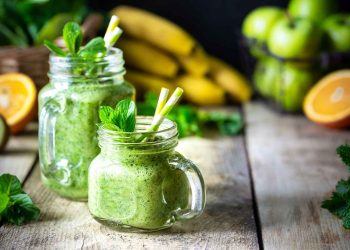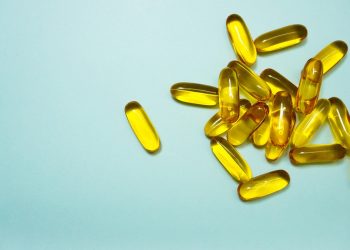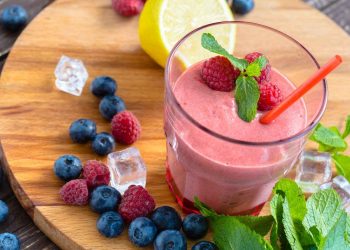Did you know that heart disease remains one of the leading causes of death worldwide? It’s a staggering reality, but here’s a silver lining: the foods we eat can play a huge role in heart health. One of the standout players in this arena is salmon. This flavorful fish isn’t just a culinary delight; it’s also packed with nutrients that can significantly benefit your heart. So, let’s dive into five delicious ways salmon can help boost heart health naturally.
Contents
1. Omega-3 Fatty Acids: The Heart’s Best Friend
When it comes to heart health, omega-3 fatty acids are like the golden ticket. Salmon is rich in these essential fats, which are known to reduce inflammation, lower blood pressure, and decrease triglycerides—factors that contribute to heart disease.
Why Omega-3s Matter
Research has shown that omega-3 fatty acids can help prevent arrhythmias (irregular heartbeats) and lower the risk of heart attacks. A study published in the Journal of the American College of Cardiology found that regular fish consumption, particularly fatty fish like salmon, is linked to a reduced risk of cardiovascular disease (Mozaffarian & Rimm, 2006).
Enjoying It: Simple Salmon Recipes
-
Grilled Salmon with Lemon and Dill: Just brush your salmon fillet with olive oil, sprinkle some salt, and top it with fresh dill and lemon slices before grilling. The result? A heart-healthy dish that’s bursting with flavor.
-
Salmon Tacos: Flake cooked salmon into corn tortillas, add avocado, cabbage, and a squeeze of lime. Not only is it delicious, but it’s also a fun way to get your omega-3s.
Caveats
While omega-3s are beneficial, balance is key. Overconsumption of fish can lead to exposure to mercury, especially in larger fish. Aim for about two servings of salmon per week to reap the benefits without overdoing it.
2. Protein Power: Building Blocks for a Healthy Heart
Salmon isn’t just a source of omega-3s; it’s also packed with high-quality protein. Protein is vital for repairing tissues, including the heart, and it helps maintain a healthy weight, which is crucial for heart health.
The Role of Protein in Heart Health
A study in the American Journal of Clinical Nutrition highlights that higher protein intake can lead to improvements in blood pressure and cholesterol levels (Siri-Tarino et al., 2010). This is particularly important as maintaining healthy blood pressure is a key factor in reducing heart disease risk.
Delicious Ways to Incorporate Protein
-
Salmon Salad: Toss grilled salmon over mixed greens with cherry tomatoes, cucumbers, and a vinaigrette dressing. It’s a protein-packed meal that’s light and refreshing.
-
Salmon Burgers: Mix flaked salmon with breadcrumbs, egg, and spices, then grill or pan-fry for a delicious burger alternative that’s loaded with protein.
Considerations
While salmon is a great protein source, those with specific dietary restrictions—like kidney issues—should consult a healthcare provider to ensure they’re meeting their protein needs without overdoing it.
3. Antioxidants: Fighting Off Free Radicals
Another benefit of consuming salmon is its nutrient density, including antioxidants like astaxanthin. This powerful antioxidant is what gives salmon its pink hue and has been shown to help reduce inflammation and oxidative stress, both of which are linked to heart disease.
The Science Behind Antioxidants
According to research published in Molecular Nutrition & Food Research, astaxanthin has been found to improve lipid profiles and reduce oxidative stress (Fassett & Coombes, 2012). By incorporating salmon into your diet, you’re not just getting a tasty meal; you’re also boosting your body’s defense against free radicals.
How to Enjoy Antioxidants from Salmon
-
Baked Salmon with Herbs: Season your salmon with a mix of herbs such as basil and parsley, then bake it. This not only enhances flavor but also packs in extra antioxidants.
-
Salmon and Vegetable Stir-Fry: Quick and easy! Sauté salmon pieces with colorful veggies like bell peppers and broccoli for a nutrient-dense dish.
Cautions
While antioxidants are generally beneficial, the best approach is to consume them as part of a balanced diet rich in fruits, vegetables, and whole grains. Over-relying on a single food source isn’t advisable.
4. Vitamin D: The Sunshine Vitamin
Did you know that salmon is one of the few food sources rich in vitamin D? This vitamin is essential for heart health, as it helps regulate calcium levels and supports the immune system.
The Heart-Health Connection
A study published in the Journal of Clinical Endocrinology & Metabolism found that vitamin D deficiency is linked to an increased risk of heart disease (Wang et al., 2008). Including salmon in your diet can help ensure you’re getting enough of this essential nutrient.
Tasty Ways to Get Your Vitamin D
-
Salmon and Quinoa Bowl: Combine cooked quinoa with roasted vegetables, topped with grilled salmon for a hearty meal that’s packed with vitamin D.
-
Smoked Salmon Bagel: Spread cream cheese on a whole-grain bagel, add smoked salmon, and top with capers and red onion for a quick breakfast rich in vitamin D.
Points to Ponder
While salmon is a great source of vitamin D, those who live in areas with limited sunlight might still need a supplement. It’s always good to check your levels with a healthcare provider.
5. Heart-Healthy Fats: The Good Kind
Not all fats are created equal. Salmon is rich in monounsaturated and polyunsaturated fats, which can help improve cholesterol levels and reduce the risk of heart disease.
Understanding Good Fats
The American Heart Association recommends replacing saturated fats with unsaturated fats to lower the risk of heart disease. A study published in Circulation showed that diets high in unsaturated fats can lower LDL cholesterol levels (Mozaffarian et al., 2010).
Ways to Enjoy Healthy Fats
-
Salmon Avocado Toast: Mash ripe avocado on whole-grain toast, top it with smoked salmon, and sprinkle sesame seeds for a trendy and nutritious breakfast.
-
Salmon Pesto Pasta: Toss whole-grain pasta with a homemade pesto sauce and flaked salmon. It’s a delicious way to incorporate healthy fats into your diet.
Final Thoughts
While salmon is a fantastic source of healthy fats, it’s essential to maintain a balanced diet. Pairing salmon with other healthy fats, like nuts and seeds, can enhance your overall nutrient intake.
FAQs
1. How often should I eat salmon for heart health?
Aim for at least two servings of salmon per week to reap its heart health benefits.
2. Is wild-caught salmon better than farmed salmon?
Wild-caught salmon generally has higher omega-3 content and fewer contaminants compared to farmed salmon. However, both can be part of a healthy diet.
3. Can I get omega-3s from other sources?
Yes! Other sources include walnuts, flaxseeds, and chia seeds. However, they contain ALA (alpha-linolenic acid), which the body converts to EPA and DHA (the forms found in fish) less efficiently.
4. What’s the best way to cook salmon?
Baking, grilling, and poaching are great methods to retain the healthy nutrients in salmon. Avoid frying, as it can add unhealthy fats.
Conclusion
Incorporating salmon into your diet is a delicious and effective way to support heart health. From its omega-3 fatty acids and protein to its antioxidants and vitamin D, this fish is a powerhouse of nutrients that can help combat heart disease. So next time you’re planning a meal, consider the myriad ways salmon can benefit not just your palate but your heart as well.
Remember, while salmon is a superfood, it’s crucial to maintain a balanced diet and consult with healthcare providers for personalized dietary advice.
This article is for educational purposes only and is not a substitute for professional medical advice. Always consult a qualified healthcare provider before making changes to your health routine.
References
-
Mozaffarian, D., & Rimm, E. B. (2006). Fish intake, contaminants, and human health: evaluating the risks and benefits. Journal of the American College of Cardiology, 48(4), 889-897. https://doi.org/10.1016/j.jacc.2006.05.042
-
Siri-Tarino, P. W., Sun, Q., Hu, F. B., & Krauss, R. M. (2010). Meta-analysis of dietary cholesterol and cardiovascular disease. American Journal of Clinical Nutrition, 91(3), 535-546. https://doi.org/10.3945/ajcn.2009.27740
-
Fassett, R. G., & Coombes, J. S. (2012). Astaxanthin: a potential therapeutic agent in the prevention of cardiovascular disease. Molecular Nutrition & Food Research, 56(1), 1-9. https://doi.org/10.1002/mnfr.201100338
-
Wang, L., et al. (2008). Vitamin D deficiency and risk of cardiovascular disease. Journal of Clinical Endocrinology & Metabolism, 93(9), 3568-3576. https://doi.org/10.1210/jc.2008-0915
-
Mozaffarian, D., et al. (2010). Changes in diet and lifestyle and long-term weight gain in women and men. Circulation, 122(2), 169-176. https://doi.org/10.1161/CIRCULATIONAHA.109.883371
Get Your FREE Natural Health Guide!
Subscribe now and receive our exclusive ebook packed with natural health tips, practical wellness advice, and easy lifestyle changes — delivered straight to your inbox.














